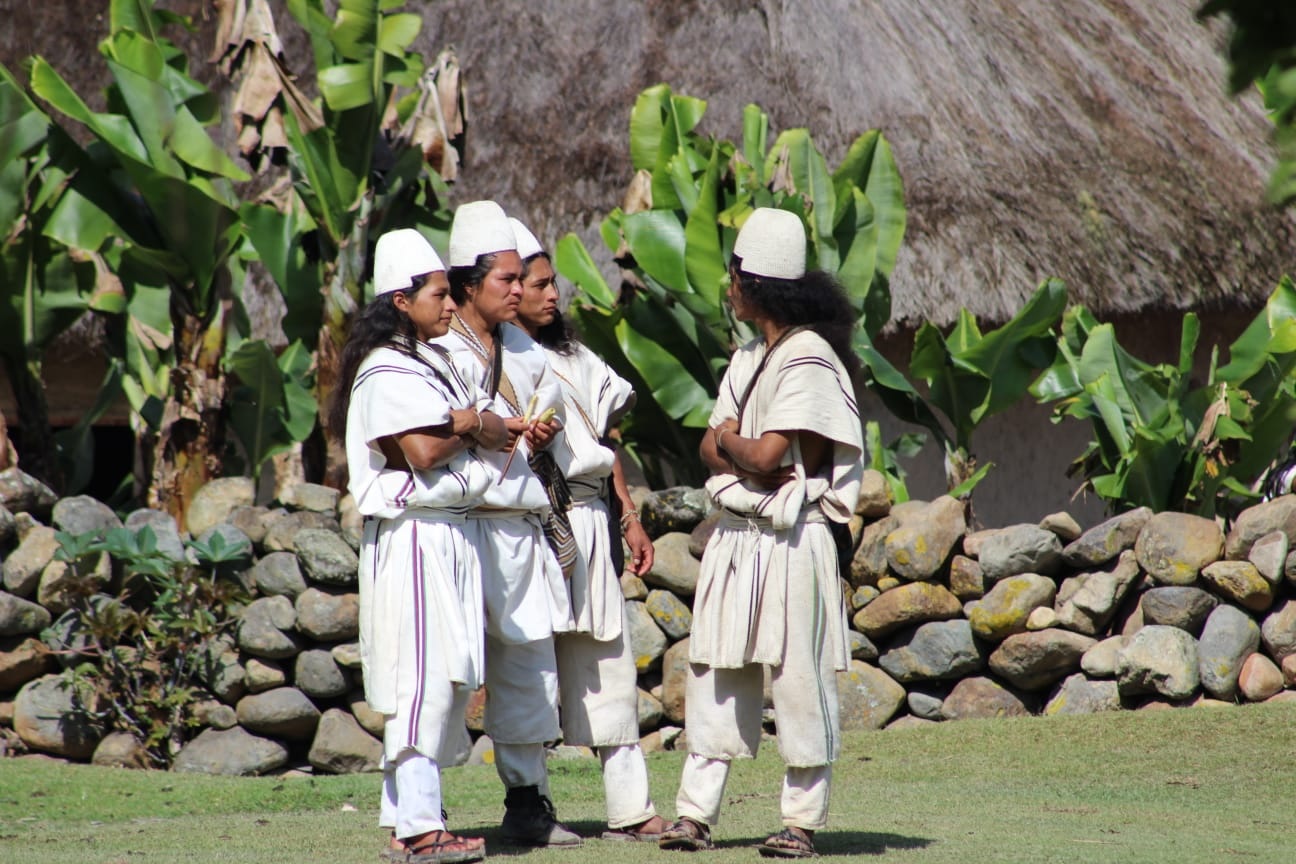
The mountainous, snow-capped Sierra Nevada de Santa Marta in Colombia, home to at least four indigenous tribes, is suffering as a result of climate change and gun violence.
The record heat being experienced in Colombia and other parts of the world has been melting the snow of Sierra Nevada, the highest coastal mountain system in the world, which is home to the Arhuaco, Wiwa, Kogui and Kankuamo peoples – whose ancestral knowledge was recognized by UNESCO as an invaluable heritage asset to humanity.
The spiritual leaders of the groups, known as ‘mamos’, met to discuss the negative changes taking hold of Sierra Nevada, with one nearby indigenous person, listening to their discussion, telling Agence France-Presse (AFP) “as a consequence of man’s actions, this is slightly warming up, more every year.”
The elders also said that since last year there have been a number of paramilitaries moving around in the region, after nearly two decades of peace.
In the town of Nabusimake, at roughly 1,900 meters above sea level, the increasing temperature brought on by climate change affects the growth of subsistence crops that require the cold climate of the mountains.
“We are here to live in peace, in harmony with the earth. Living otherwise leads to global warming,” the Mamos said, according to France24’s translator, adding “Man is going to end himself by his own invention, believing himself to be very intelligent.”
Of the 14 tropical glaciers that stood in Colombia at the turn of the century, only six remain, spread across four volcanoes and two snowy mountain ranges, including Santa Marta. In roughly 170 years, from the mid-19th century to 2022, the glacier area of Sierra Nevada shrank from 82 kilometers to 5.3 kilometers, according to the State Institute of Hydrology, Meteorology and Environmental Studies (IDEAM).
Colombia’s first indigenous UN ambassador, from Sierra Nevada
The warning about the effects of global warming was echoed by Leonor Zalabata, Colombia’s first indigenous ambassador to the UN, who said “global warming and the climate crisis are widespread. All the perpetual glaciers that existed in the Sierra Nevada are disappearing.”

In January this year, the environmental authority noted a record temperature of 40 degrees celsius in the city of Santa Marta, on the seashore and next to the Sierra.
Presence of guerrillas and paramilitaries
Because of its uneven geography and proximity to the coast, the Sierra Nevada has been used as a strategic refuge spot for both guerrillas and paramilitaries, as well as drug traffickers, since around 1970. Despite the disarmament of the Revolutionary Armed Forces of Colombia and the paramilitary United Self-Defense Forces of Colombia, threats of violence still exist – even in Sierra Nevada.
It is now the refuge of paramilitary groups who have reached a stalemate in their peace talks with the government of leftist president Gustavo Petro.
“This crisis of violence is coming again. That is why we ask that the government resumes its dialogue,” said Arukin Torres, indigenous leader and son of Zalabata – as reported by France24.
“The FARC and ELN guerrillas passed by. The paramilitaries also passed and we suffered all the fury of the war. Many innocent comrades have died. Mamos, leaders,” said Torres, who recalls that the region “has been used as an area of military strategy.”
See all the latest news from Colombia and the world at ColombiaOne.com. Contact our newsroom to report an update or send your story, photos and videos. Follow Colombia One on Google News, Facebook, Instagram, and subscribe here to our newsletter.

